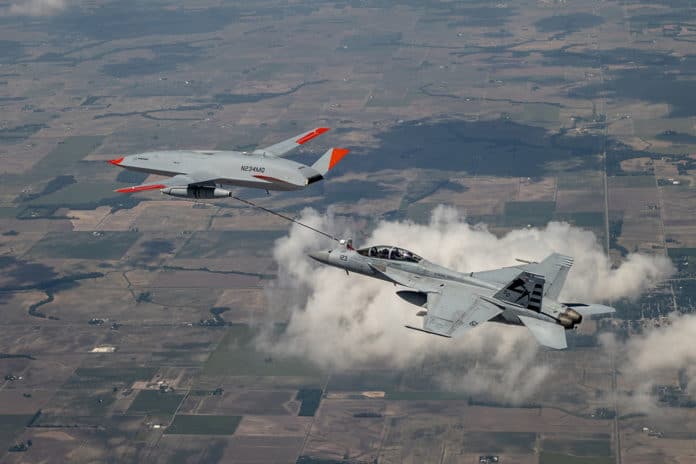Boeing and Northrop Grumman have tested the manned-unmanned teaming (MUM-T) capabilities in a virtual environment using the U.S. Navy’s MQ-25 Stingray unmanned aerial refueler, the E-2D Advanced Hawkeye airborne command-and-control aircraft, and the F/A-18 Super Hornet.
The demonstration used Northrop Grumman’s portable E-2D simulator in conjunction with Boeing’s F/A-18 and MQ-25 simulations to establish a data link network that was used to supervise MQ-25 flight operations.
For the simulated exercise, the E-2D was assigned the role of the air wing “tanker king” while the MQ-25 refueled the F/A-18, in addition to supervising the MQ-25 during intelligence surveillance and reconnaissance mission. The E-2D was able to conduct MUM-T operations with the MQ-25 using only existing operational flight program software and required only minimal change to the crew interfaces on both the E-2D and the F/A-18, which was the simulated refueling recipient.
The team also demonstrated how anticipated carrier air wing concepts – such as the F/A-18 and E-2D changing the tanker’s orbit station, flight path, or aerial refueling store payload – were made routine and repeatable with the unmanned MQ-25. This required minimal changes to the F/A-18 cockpit display, helping to reduce pilot workload while supervising unmanned operations and providing consistency with how pilots operate and train today.
A more advanced MUM-T mission simulation showed how an open behavior software framework could be used to aggregate traditional unmanned system commands into an overall autonomous mission behavior.
The Boeing MQ-25 has already carried out the refueling of the F/A-18 Super Hornet. But the eventual plan is for the drone to be able to operate from a conventional aircraft carrier to refuel F/A-18 Super Hornets, EA-18G Growlers, and F-35C Lightning II aircraft, leaving crewed aircraft free for more complex duties.
“This demonstration of the E-2D Advanced Hawkeye controlling the MQ-25 builds on our experience in integrating unmanned systems into carrier flight operations. As the airborne command and control node, E-2D will be a critical component to enabling the U.S. Navy’s Unmanned Campaign Framework,” said Janice Zilch, vice president, Manned Airborne Surveillance Programs at Northrop Grumman. “We work closely with industry partners and the Navy in support of meaningful technology demonstrations that showcase E-2D’s agile environment, interoperability, and unmatched command and control capabilities.”
Future Boeing MUM-T demonstrations will involve additional mission areas, interface enhancements, autonomous behaviors, and resilient, protected networks.
